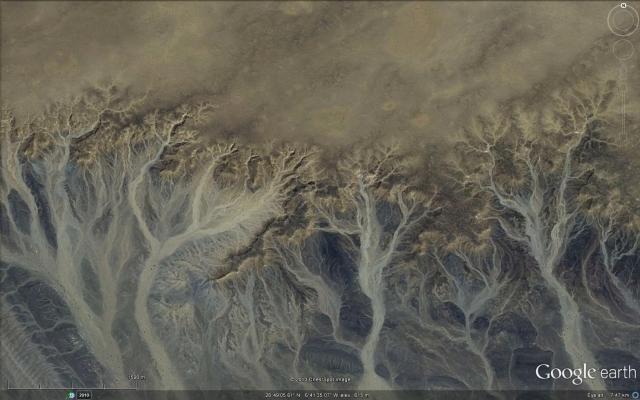Whether they’re wet (river deltas, tidal channels) or dry (desert, erosion), I never cease to be fascinated by these images. The first two even have ‘leaves’ and are especially beautiful:






Origin
The elevation of the hockey stick and the whole global warming thing to iconic status makes it a giant with feet of clay – poorly founded and ready to crumble. Time to do some digging…Sister Website

www.climateapplications.com
-
Recent Posts
Meta
Recent Comments
tom0mason on The climate change movement is… Bloke down the pub on The climate change movement is… Verity Jones on The climate change movement is… gallopingcamel on The climate change movement is… wickedwenchfan on The climate change movement is… vuurklip on The climate change movement is… barry on The error of our ways barry on The error of our ways climanrecon on The error of our ways Verity Jones on The error of our ways

One of the things that attracted me to the study of geography while at school was how features like these, that may be hundreds of miles across, are replicated at the micro scale for example by a trickle of water flowing into a muddy puddle. I suppose, in a way, it is a simple form of modelling.
A bit like fractals. I read somewhere that coastlines tend to have a similar micro and macro structures.
Gorgeous, aren’t they?
Not “a bit like fractals” – they ARE fractals!
They are dendritic growths and they appear all over the place in nature.
Here are some causing a fault on a printed circuit board due to corrosion.
Article here:
http://flex.iconnect007.media/index.php/article/71553/corrosion-resistance-of-pcb-surface-finishes-in-harsh-environments/71556/?skin=flex
Dendritic – indeed (dendron [δένδρον] =tree, for those who know no Greek)
They are very beautiful but they all appear to be braided channels characteristic of desert regions where water has its way with rock, gravel, and sand without interference from vegetation. Vegetation and its roots have a braking effect on the water and cause meanders.
Which is why they can also be found on Mars
http://marstrek.jpl.nasa.gov/ is even more fascinating than Google Earth.
The last one is a delta.
Checking…you’re right. Deltas are too dynamic to develop a lot of vegetation (except when the’re not). The basic idea still pertains. Braided channels produce a linear sorting with an even gradient between boulders and sand. Vegetated areas produce a stepwise sorting that begins anew with each “pool” and “drop”.
I have a problem with water forming these patterns, as often the water has to flow uphill. A more likely explanation is electric discharge, which we can replicate exactly in the lab. Another pointer to electricity is that the craters do not exhibit the form of impacts, and superficially at least they would all have been perpendicular hits, a highly improbable situation. Not only this many of the circular craters have small craters superimposed around the rims, again a characteristic of electrical discharge.
@catweazle66,
Great to have you commenting again.
Hi Verity. There is a school of thought (a very strong one) that these patterns are electrical in nature (electric discharge) and nothing to do with water. We see them throughout the solar system and they can be replicated in the lab (something that science has forgotten of late). I think the passing resemblance to water erosion has distracted and confused science, especially geologists. The features of Mars would have required water to flow uphill to make in many cases, something that is quietly ignored.
The reason settled science is resistant to this idea is it would mean admitting that a lot of other science is wrong, and especially fundamental cosmology of big bang, black holes, dark matter, dark energy and very importantly the nature of gravity. Very interesting times ahead.
Peter, that makes sense. I saw footage once on TV of electricity burning such a pattern on wood.
My Eureka moment was when watching a video about Valles Marineris on Mars. Way back after University I did an apprenticeship in automotive engineering (long story) and got my welding qualification (boilermakers I think it was sometimes called). Due to the fact that I excelled at the practical and academic stuff on the course I was able to use some of the more advance arc welding tools at the technical college usually reserved for advanced students of welding and remember using an arc cutter in 2 inch think steel. The shapes I could make are exactly the shapes and forms of Valles Marineris. From that point a couple of years back I have taken more notice of the electrical effects in the universe.